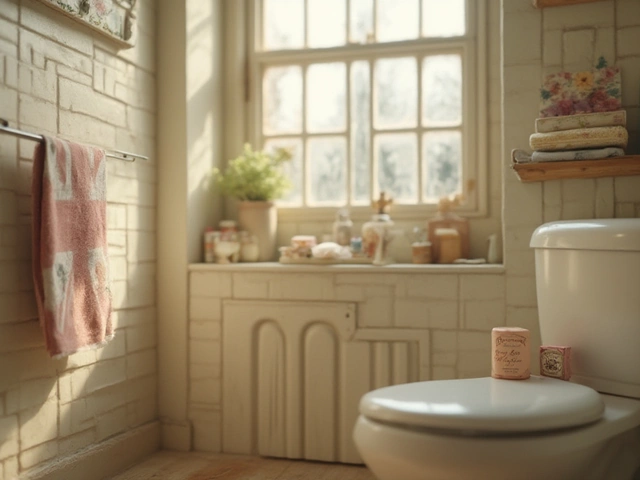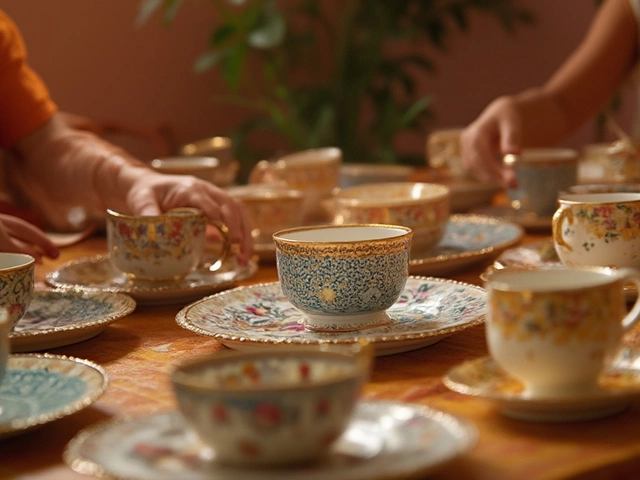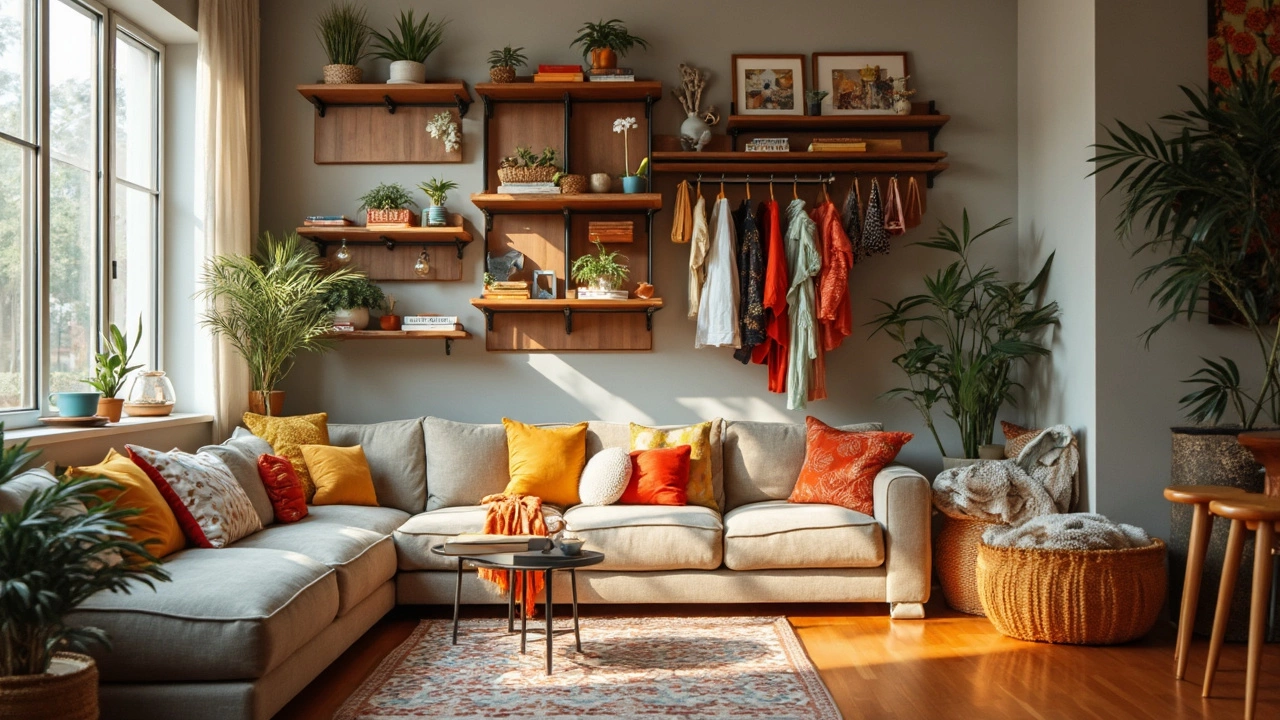
No closets can feel like a nightmare, but it doesn't have to be. City apartments, old houses, or even tiny homes often skip built-in closets. That just means you need to get creative. People actually lived for years without closets before they were standard in homes, so it’s totally possible to work with what you’ve got.
First thing: look at your space with a new set of eyes. The back of doors, under beds, above cabinets, empty nooks—these can become your new storage zones. A tall bookshelf tucked beside a door can hold baskets of clothes. Hooks on the wall keep bags, hats, and jackets up off the floor. Even small spaces can hide surprising options if you spend a few minutes scoping around for underused corners or walls.
- Why Some Homes Have No Closets
- Unique Storage Spots Most People Miss
- Furniture That Doubles as Storage
- Tips for Keeping Things Organized
- Budget-Friendly DIY Options
Why Some Homes Have No Closets
It's not just older homes that skip out on closets—some modern places are missing them, too. Here’s the thing most folks don’t realize: closets didn’t even become a standard feature in homes until the mid-20th century. Before then, people used wardrobes, armoires, or even trunks for storage. Building codes in some parts of the U.S. still don’t require closets in bedrooms, which is why you’ll often walk into a house (especially in cities or historic neighborhoods) and wonder where on earth you’re supposed to put your stuff.
There are a few reasons behind this:
- Storage solutions weren’t always built in because people owned less clothing and belongings.
- Real estate developers and landlords sometimes cut out closets to increase living space or save on building costs.
- In some urban apartments or converted spaces (think old factories turned into lofts), closets got skipped in the design process.
| Home Type | Closet Likelihood | Why |
|---|---|---|
| Pre-1950s houses | Low | Not common in original building plans |
| Loft apartments | Low | Converted from industrial/commercial use |
| Modern tiny homes | Medium | Closets often left out for space |
| Suburban houses post-1960 | High | Closets became standard selling point |
So if you’ve found yourself in a home without a closet, you’re not alone. Lots of people are working with the same challenge due to when or how their houses were built. The good part? With a little creativity, you can make up for that missing closet space and sometimes end up with a setup that works even better for you.
Unique Storage Spots Most People Miss
Most folks overlook a bunch of clever storage solutions hidden right in plain sight. One big one? The space under your bed. Rolling bins or shallow drawers work wonders here. If your bed frame’s too low, pop on some risers—you instantly get a whole new area for storing off-season clothes or shoes.
Another spot that people tend to forget is above doors and windows. It’s the perfect spot for slim shelves. Toss up a shelf, and boom—you’ve got extra space for baskets, books, or even towels in a small bathroom. There’s actual research showing that vertical storage can double usable space in tight homes, and these high-up shelves barely get noticed, which keeps your stuff out of sight.
The insides of cabinet doors also make prime real estate. Attach little racks or hooks to keep things like cleaning supplies, tools, or even snacks for the kitchen. A magnetic strip inside a bathroom cabinet door keeps bobby pins and tweezers right where you need them—no digging through drawers.
Don’t forget the space above kitchen cabinets, if you have that weird gap. It’s not just a dust collector—grab a few bins or baskets to stow rarely-used kitchen gadgets or backup paper towels. And if you’re short on hallway storage, a peg rail or a row of sturdy hooks turns an empty wall into organized chaos. Coats, bags, umbrellas—up off the floor and easy to grab on your way out.
Look for dead space next to appliances, too. That skinny gap between the fridge and the wall? Slide-out racks or even just hooks can change the game for extra pantry staples. Basically, if you start looking up, down, and behind, you’ll spot storage possibilities you never thought about before.
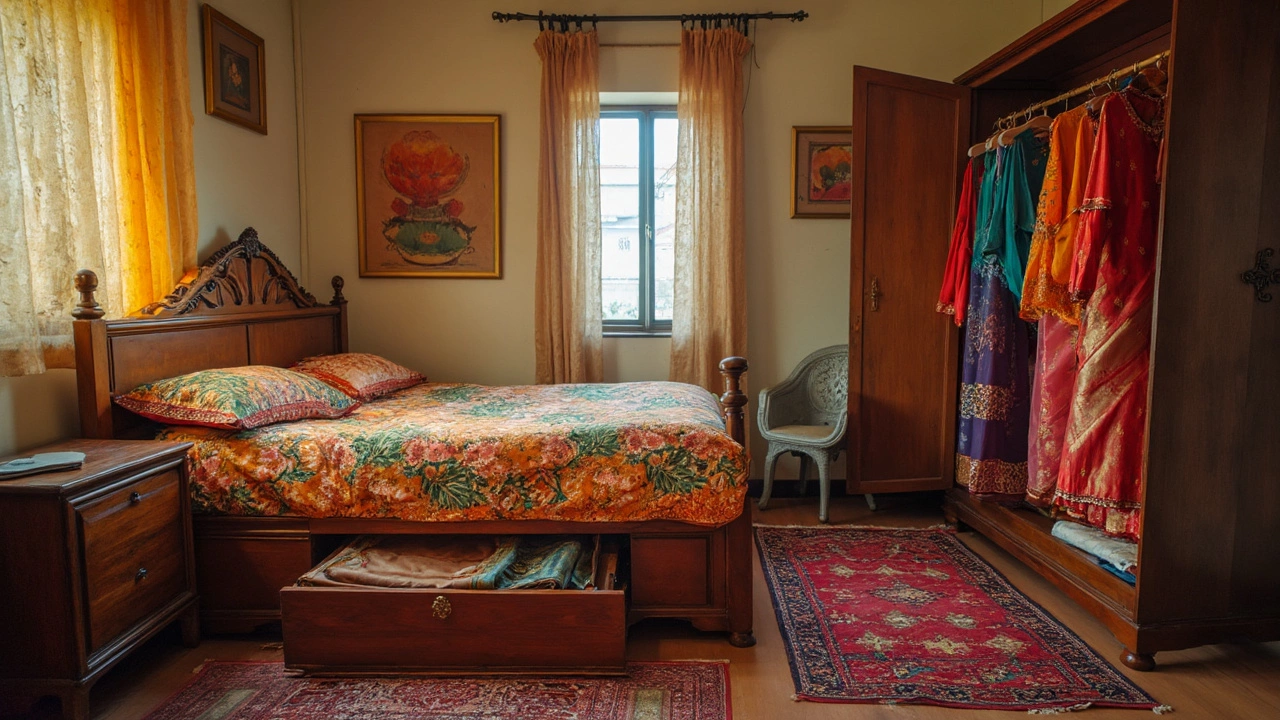
Furniture That Doubles as Storage
If your home is missing closets, the furniture you pick does a lot of heavy lifting. There’s a whole world of sofas, beds, and tables built specifically for stashing stuff out of sight. Smart storage furniture is a game changer. That’s not hype—it’s how people in storage solutions communities keep their tiny apartments livable.
Let’s break down some great double-duty options that actually work in real life:
- Storage beds: Most beds now come with built-in drawers underneath. Some have lift-up mattresses to hide even more beneath. Average capacity? Around 18-24 cubic feet—enough for all your off-season clothes or extra bedding.
- Ottomans and benches: These look like regular furniture but the tops flip open to reveal a deep cavity inside. Perfect for shoes, blankets, or backpacks. They slot in easily at the end of your bed or by the front door.
- Coffee tables with shelves or hidden boxes: A table isn’t just for coffee mugs. Use its lower shelves for baskets or books. Some versions come with secret compartments for stuff you don’t want lying around.
- Bookshelves with bins or boxes: Instead of letting little items get messy, grab a couple of baskets or boxes and line them up on open shelves. Instant storage and you still get that organized look.
- Sofas with storage: Sectionals with hidden compartments are getting easier to find and not just in fancy stores. These spaces swallow up throws, toys, or anything else you want out of sight before guests show up.
| Furniture Type | Typical Storage Volume | Notes |
|---|---|---|
| Queen Storage Bed | 18-24 cu ft | Drawers or lift-up base |
| Entry Bench | 4-6 cu ft | Best for shoes & bags |
| Ottoman | 2-4 cu ft | Great for blankets |
| Storage Sofa | 6-9 cu ft | Hidden beneath seats |
Worried about price? Not all these solutions break the bank. IKEA, Wayfair, and even big box stores have affordable options that can squeeze into tight budgets. When picking storage furniture, measure your space and actually check the storage measurements (not just the outside). Stuff adds up fast, and you want every inch to count.
Tips for Keeping Things Organized
Getting clever with storage only takes you halfway if you can’t keep everything in check. Clutter builds up fast, especially when you're hiding stuff in every nook. Pick a simple system and stick with it—it makes the mess less likely to creep back in.
- Label everything. Whether it’s bins, boxes, or baskets, slap a label on it. You’ll know exactly where stuff goes and it saves you from digging through piles later. You don’t need a label maker—just a roll of masking tape and a Sharpie does the trick.
- Group similar items together. Put all your winter gear in one bin, your workout clothes in another. This makes finding things quick and keeps your organizing strategy clear.
- Rotate what’s out in the open. Use open shelving for things you grab a lot (shoes, bags), then stash less-used gear in bins behind or under furniture. This also helps keep surfaces from getting buried.
- Don’t overstuff. Stuffing bins or baskets too tight just makes them hard to use and a pain to put things back. If it doesn’t fit, consider donating or selling what you don’t use. Statistically, American homes have more than 300,000 items—so odds are, there’s extra junk you can get rid of.
- Set a weekly reset. Once a week, take a few minutes to put things back where they belong. Make it part of your routine, like Sunday evenings or while watching TV. This stops the mess from piling up and reminds everyone in the house what goes where.
Most people with a storage solutions plan stick with things longer if it’s dead simple. You don’t need fancy boxes or a Pinterest-worthy shelf—just make sure everything you own has a spot, and that you can get to it easily.
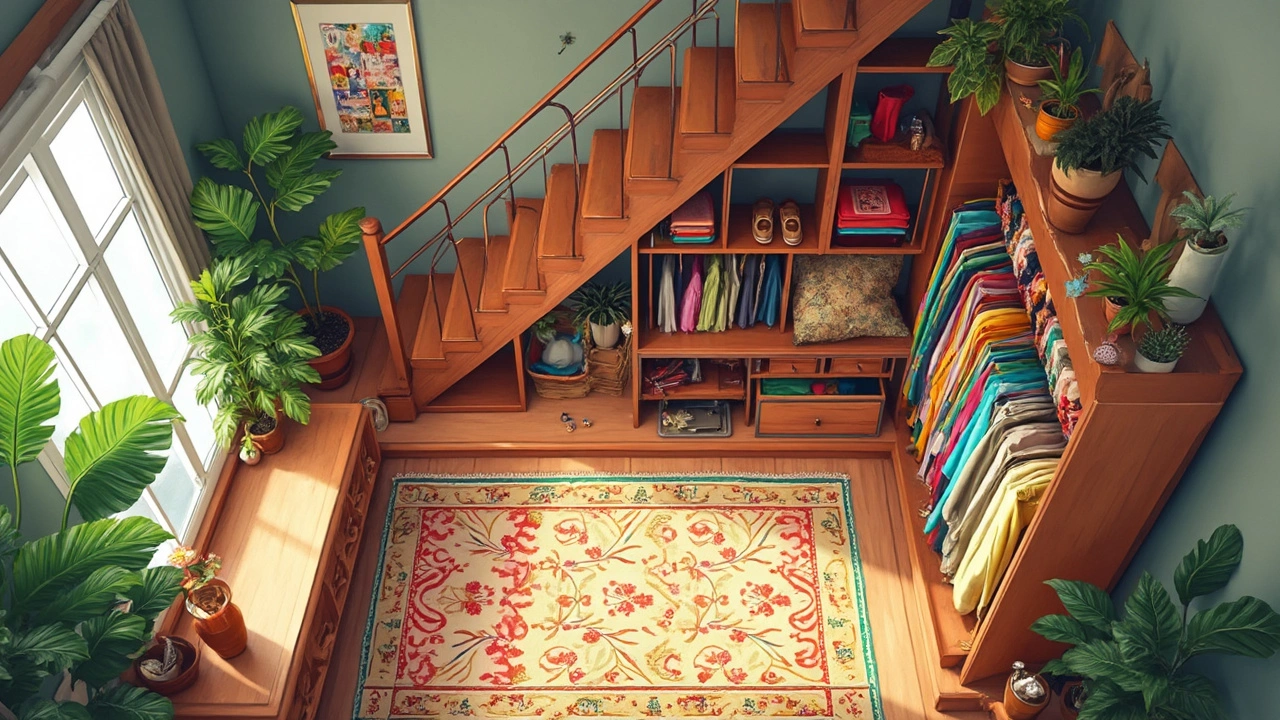
Budget-Friendly DIY Options
Tight on cash but need more places to stash your stuff? You can build some surprisingly slick storage solutions with things you already have or can pick up for cheap. Most folks don’t want to drop hundreds on custom setups, and that’s totally fine—here are ways you can make your own storage and still keep your wallet happy.
- Crates and Bins as Shelves: Wooden crates (like the ones you see at craft stores or grocery markets) make awesome shelves when you screw them up on the wall. Stack them or hang them for a little open shelving—great for shoes, books, or even folded jeans.
- Under-Bed Roll-Out Storage: Grab some old drawers or sturdy cardboard boxes and pop on some cheap wheels you can buy online for a few bucks. Roll them under your bed, and you’ve got hidden storage for clothes, linens, or gear you don’t use daily.
- Pegboards for Wall Storage: Pegboards run about $20 for a 2x4 foot panel at most hardware stores, and they’re the workhorses of the no-closet life. Hang tools, hats, bags, or even baskets for flexible storage that moves with your needs.
- Tension Rods for Instant Closet Space: These cost just a few dollars and can fit inside alcoves, below shelves, or anywhere you can press them between two sturdy walls. Hang clothes, shoes (with clips), or even organizers for cleaning supplies.
- Hooks, Hooks, Everywhere: Skip drilling holes and use adhesive hooks for everything from backpacks to towels. Ten to fifteen hooks cost less than a fancy coffee. Keep things off the floor and easy to grab.
| DIY Option | Average Cost (USD) | Time to Install |
|---|---|---|
| Crate Shelves | $8 per crate | 30 minutes |
| Under-bed Storage | $10 per unit | 1 hour |
| Pegboard Wall | $20 per sheet | 30 minutes |
| Tension Rod Closet | $5 per rod | 10 minutes |
| Adhesive Hooks (pack of 10) | $6 | 15 minutes |
Don’t be afraid to hit up local thrift shops or online marketplaces for cheap furniture and storage pieces. Sometimes, older bookshelves, small dressers, or rolling carts can make perfect new storage spots with a little cleaning and a coat of paint. And if you’re really short on cash, keep an eye out for curbside giveaways—people leave all kinds of good stuff out before moving!
With a bit of creativity and sweat, you’ll find your things have a home—even if your house skipped closets completely.
